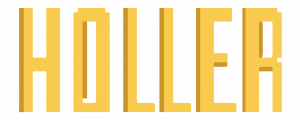-
Lucy Prewitt posted
News Article #2:
My Top 3 Formatives
There are many assessment practices that I use that have yielded tremendous benefits for students. I use formative assessments for quick, continual assessing of student learning. The purpose of formative assessments is to capture data to inform my instruction. It lets me know which students are struggling before we get to a summative assessment. It helps me plan my lessons to include extension activities for students who picked up the objective quickly, as well as elaboration activities for students who need more intervention and instruction on the objective. My formative assessment tools are done as students are learning and used for student’s future learning, as opposed to summative assessment tools, which are used as assessment of student learning. The following are my three most common practices for formative assessment.
Mastery Checks
One strategy that has become a part of my curriculum is what I call Mastery Checks. After students have had guided and independent practice on an objective, I give them a Mastery Check on that objective. It is essentially a four question quiz (graded for completion, not accuracy) that is aligned to both the summative assessment and the EOC or ACT. There is one question that requires them to explain part of the concept, and three questions that require them to apply the skill, at different levels of understanding. We go over the Mastery Checks immediately after we take them so students get immediate feedback. At the end of a unit, the students staple their Mastery Checks together, and this becomes their study guide.Whiteboards
Another practice I use that is very simple, yet effective, and I use it multiple times a week. After notes and/or guided practice on an objective, I will use my classroom set of whiteboards to formatively assess students. I will post a problem on the board. Students will work it on their whiteboards, and hold them up once they are finished. As they finish and hold them up, I will tell them yes or no, and they will either erase their boards and work on the next problem, or they will correct their mistakes. This is a quick and easy way to assess students for multiple reasons, but mainly because it lets me very quickly see who understands the objective (and how well they understand it) and who does not. I use this information to create RTI groups directly following the activity.Rate Yourself: 1-4
The last strategy I use to assess students multiple times in one class period is a personal rating. After the warm, after notes, after guided practice—basically after every part of class, I will ask students to rate their selves 1-4.
• A rating of a “1” is equivalent to a novice rating. If students rate themselves a 1, they may feel some of the following feelings: I am beginning to have very little, if any, understanding of this content. I still need the teacher to walk me through almost all of the steps. I cannot show any work because I do not know how to begin or complete the problems. I need the notes explained to me again.
• A rating of a “2” is equivalent to an apprentice rating. If students rate themselves a 2, they may feel some of the following feelings: I am approaching a basic understanding of the content. I know a few steps, but get mixed up at certain parts of the problems. I can show some work on my own, but there may be mistakes. I need more guided practice.
• A rating of a “3” is equivalent to a proficient rating. If students rate themselves a 3, they may feel some of the following feelings: I am meeting a proficient understanding the content. I know most of the steps to solve the problem, but might make a mistake every once in a while. I can show all or almost all of my work using numbers. When I try more challenging problems, I sometimes struggle. I need more independent practice.
• A rating of a “4” is equivalent to a distinguished rating. If students rate themselves a 4, they may feel some of the following feelings: I am exceeding understanding of the content. I can apply the concepts learned to more rigorous problems. I know all of the steps to solve the problems regarding this content. I can show all work using numbers, pictures, and words. I can explain the process to solve the problems to another student. I have been successful and can understand and complete most of the challenging problems. I am ready for an assessment.
Media
Photos
Videos
Audios
Files
Sorry, no items found.
